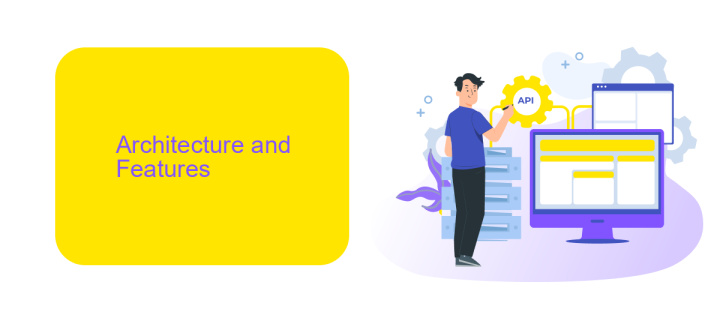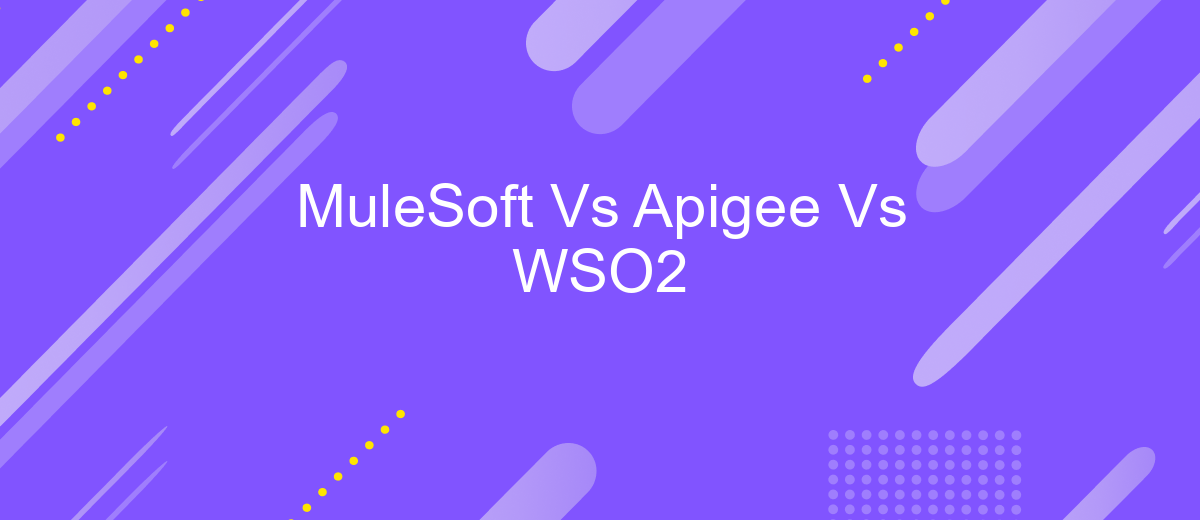MuleSoft Vs Apigee Vs WSO2
In today's rapidly evolving digital landscape, choosing the right API management platform is crucial for seamless integration and efficient data exchange. This article delves into a comparative analysis of three leading API management solutions: MuleSoft, Apigee, and WSO2. By examining their features, strengths, and limitations, we aim to help businesses make informed decisions tailored to their unique integration needs.
Introduction
In today’s digital landscape, businesses are increasingly relying on API management platforms to streamline their operations and enhance connectivity. MuleSoft, Apigee, and WSO2 are three leading solutions that offer robust capabilities for API management and integration. Each platform has its unique strengths and caters to different business needs, making it crucial to understand their distinct features and benefits.
- MuleSoft: Known for its Anypoint Platform, MuleSoft provides comprehensive tools for building, deploying, and managing APIs and integrations.
- Apigee: A Google Cloud product, Apigee excels in API analytics, security, and monetization, making it a preferred choice for enterprises.
- WSO2: This open-source platform offers flexibility and a wide range of integration capabilities, ideal for organizations seeking customizable solutions.
Choosing the right API management tool depends on various factors, including your organization’s existing infrastructure, specific integration needs, and long-term goals. Platforms like ApiX-Drive can further simplify the integration process by offering automated workflows and seamless connectivity between different applications, ensuring that your business operations run smoothly and efficiently.
Architecture and Features

MuleSoft, Apigee, and WSO2 offer distinct architectural approaches and features for API management. MuleSoft's Anypoint Platform provides a unified, hybrid integration platform that includes API design, implementation, and management. It supports both on-premise and cloud deployments, offering tools for API lifecycle management, data integration, and analytics. Apigee, owned by Google Cloud, focuses on full lifecycle API management with robust security features, traffic management, and detailed analytics. It facilitates seamless integration with Google Cloud services, enhancing its capability for scalable and secure API management.
WSO2 offers an open-source API management solution that emphasizes flexibility and extensibility. Its architecture supports microservices and containerization, making it suitable for modern cloud-native applications. WSO2's API Manager integrates with other WSO2 products to provide a comprehensive middleware solution. For users seeking additional integration capabilities, services like ApiX-Drive can be leveraged. ApiX-Drive simplifies the process of connecting various applications and automating workflows, complementing the integration features of MuleSoft, Apigee, and WSO2 by providing a user-friendly interface and extensive pre-built connectors.
Use Cases and Success Stories

When comparing MuleSoft, Apigee, and WSO2, it's essential to consider their use cases and success stories to understand their real-world applications and effectiveness. Each platform has been successfully implemented across various industries, demonstrating their versatility and robust capabilities.
- MuleSoft has been widely adopted in finance and healthcare sectors, enabling seamless integration of legacy systems with modern applications. For example, a leading bank used MuleSoft to streamline its loan processing system, reducing the time from application to approval by 50%.
- Apigee excels in the e-commerce and telecommunications industries, providing scalable API management solutions. A global telecom company leveraged Apigee to enhance its customer service platform, resulting in a 30% increase in customer satisfaction.
- WSO2 is particularly strong in the public sector and education, offering open-source integration solutions. A renowned university implemented WSO2 to integrate its various administrative systems, improving data accessibility and operational efficiency.
Moreover, services like ApiX-Drive can further enhance these platforms by offering additional integration capabilities, making it easier to connect disparate systems and automate workflows. By leveraging such tools, organizations can achieve even greater efficiency and innovation in their digital transformation journeys.
Pricing and Licensing

When comparing MuleSoft, Apigee, and WSO2, pricing and licensing are critical factors to consider. Each platform offers different pricing models that can significantly impact your budget and integration strategy.
MuleSoft typically offers a subscription-based model, where pricing is determined by the number of APIs, data volume, and other factors. Apigee, on the other hand, provides a more flexible approach with options for both subscription and pay-as-you-go models. WSO2 tends to be more cost-effective, offering open-source solutions with optional paid support and enterprise features.
- MuleSoft: Subscription-based, pricing varies by API count and data volume.
- Apigee: Flexible, with subscription and pay-as-you-go options.
- WSO2: Open-source, with optional paid support and enterprise features.
For those looking to streamline their integration processes further, ApiX-Drive offers an additional layer of flexibility. This service can automate and simplify integrations across various platforms, potentially reducing the overall costs associated with manual integration efforts. By understanding these pricing and licensing models, businesses can make more informed decisions that align with their financial and operational needs.
Conclusion and Recommendations
In conclusion, each of the integration platforms—MuleSoft, Apigee, and WSO2—offers unique strengths and capabilities. MuleSoft excels in its comprehensive API management and integration solutions, making it ideal for large enterprises with complex needs. Apigee stands out with its robust API analytics and developer-friendly environment, which is perfect for businesses focused on API performance and security. WSO2, on the other hand, provides a highly customizable and open-source solution that is well-suited for organizations looking for flexibility and cost-effectiveness.
For businesses seeking to streamline their integration processes further, leveraging a service like ApiX-Drive can be beneficial. ApiX-Drive simplifies the connection between various applications and services, making it easier to manage data flows without extensive coding. This can complement the capabilities of MuleSoft, Apigee, and WSO2 by providing an additional layer of automation and efficiency. Ultimately, the choice of platform should align with the specific needs and goals of the organization, considering factors such as scalability, ease of use, and total cost of ownership.


FAQ
What are the main differences between MuleSoft, Apigee, and WSO2?
Which platform is the best for API management?
How do these platforms handle scalability?
Can these platforms integrate with existing enterprise systems?
What are some alternatives for automating and setting up integrations?
Apix-Drive is a simple and efficient system connector that will help you automate routine tasks and optimize business processes. You can save time and money, direct these resources to more important purposes. Test ApiX-Drive and make sure that this tool will relieve your employees and after 5 minutes of settings your business will start working faster.

